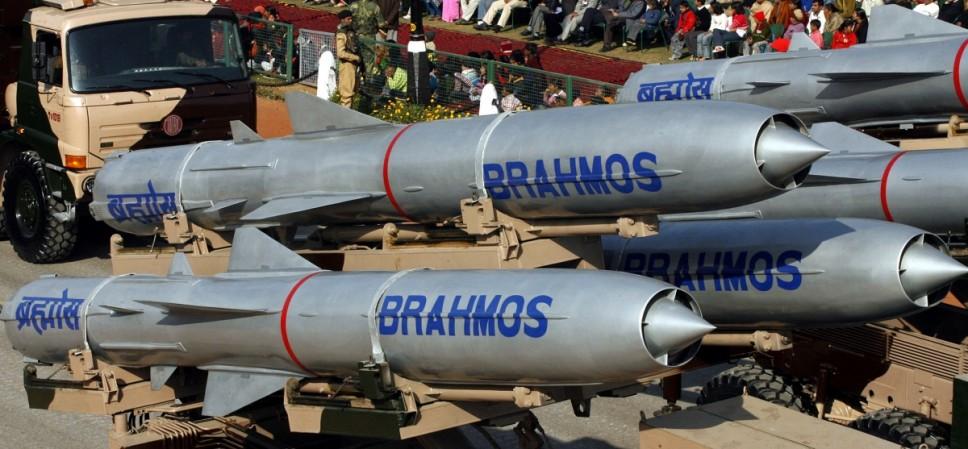
The Nirbhay cruise missile represents India's ambitions to create a subsonic cruise missile rivalling American Tomahawk cruise missile (in capability). But out of the four tests, only one was a success.
A recent flight-test of the 1,000km Nirbhay cruise missile, which has the capability to carry conventional and nuclear warheads, ended in "utter failure." Designed and developed by Defence Research and Development Organisation's (DRDO) it was once considered to be its pride.
With reports suggesting that Nirbhay is perhaps jinxed, a highly placed source told the Indian Express that the project could be junked since it has not been able to deliver even after 12 years since the project was launched.
However, a detailed review of the project is expected to be conducted shortly.
Nirbhay missile development was launched in 2004, and the projected date of completion (PDC) was December 31, 2016.
Scientists are grappling to fix the issues related with Nirbhay, be it in the flight control software or the navigation system.
DRDO sources had initially pointed out that the issue was in an unreliable hardware component, but it is yet to be ascertained as to what is defective -- the software or the hardware.
Meanwhile, the blame game is on between Research Centre Imarat (RCI), which supplied the hardware and the Aeronautical Development Establishment (ADE) that supplied the software. There have been differences between the two organisations regarding the functional efficacy, according to an insider.
One issue that had cropped up since the beginning of the project has been the flight control software, the report noted.
Nirbhay as strategic weapon
Nirbhay was developed be a long-range missile with a speed of between 0.8 and 0.9 Mach (speed of sound). It is said to be capable of carrying either conventional or nuclear warhead of 24 different types.
In order to evade enemy radars, the missile can fly at very low altitudes of 20mts or less and was expected to use terrain-following function.
Trials were "pushed?"
Reports have noted that the missile was "pushed for trial" without the relevant issues being fixed, especially in its flight control and navigation software.
The Nirbhay team was not ready for the fourth trial because some sub-systems and software were not foolproof. The test was reportedly conducted in a hurry, even as all software designers had advised not to go for it, a source told the New Indian Express.
The source also noted that the team had not adhered to the recommendations of the inquiry committee report by Shyam Chetty, which was initiated after the previous test had ended in a failure. The committee had recommended that the missile should be further tested only after all defects and snags were properly rectified.
BrahMos vs Nirbhay and MTCR
One cruise missile that India has operationalised is the BrahMos cruise missile, a joint venture between India and Russia. Though the range of this cruise missile is only 290 km, it can be extended.
India has been given an entry into the Missile Technology Control Regime (MTCR), an elite grouping of countries. This full membership allows India and Russia to double the standoff engagement range to 600 km.
New Delhi and Moscow agreed on October 26, during a meeting of the 16th Intergovernmental Commission on Military-Technical Cooperation, co-chaired by Indian Defence Minister Manohar Parrikar and his Russian counterpart, Gen Sergei Shoigu, that they will be increasing the BrahMos missile range.
Moreover, with the MTCR membership, India can also develop long range cruise missiles, joint venturing with another country.
In defence of Nirbhay
Meanwhile, some reports have defended Nirbhay saying while BrahMos is long and heavy missile, Nirbhay is shorter and less heavier. BrahMos is developed to cruise at high altitudes and complete its terminal stage at very low altitude. Nirbhay, on the other hand, travels at low altitudes, much of its flight path.
The missile also has the ability to loiter, and to pick out and engage a specific target in a multiple target environment. Additionally, BrahMos does not have the ability to carry a nuclear warhead, but Nirbhay has, Swarajya reported.
Rs 100 crore spent
DRDO has spent over Rs 100 crore on the Nirbhay missile project. The figure includes research and development (R&D) and trials.
It has been argued that the Nirbhay project should not be cancelled as it is not only about having a long range cruise missile, but also about mastering the cruise missile technology. With the Chinese and now even Pakistan being successful in testing cruise missiles, Indian defence scientists need to be given a positive push to successfully complete the project, by both the government and the armed forces.








